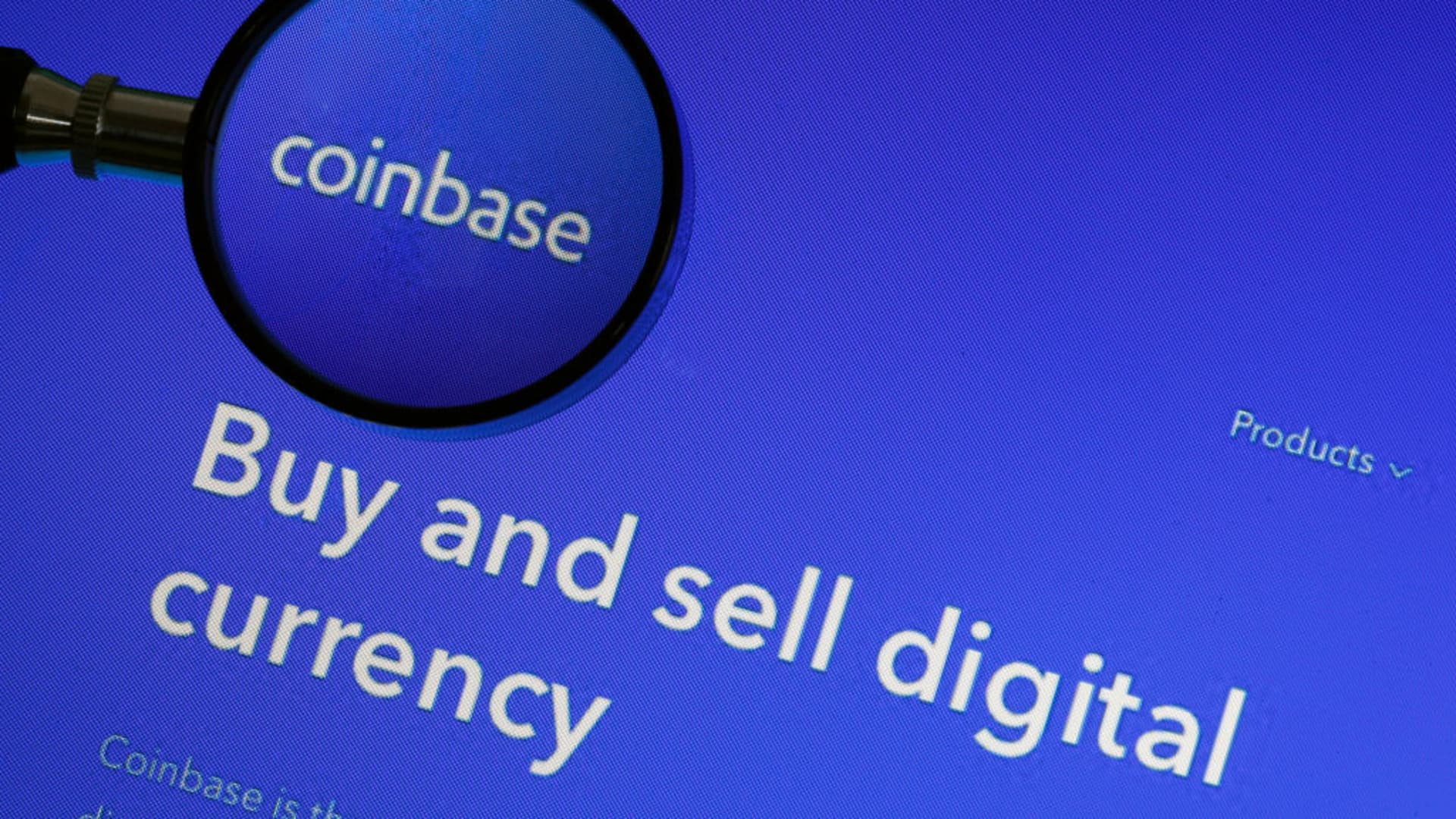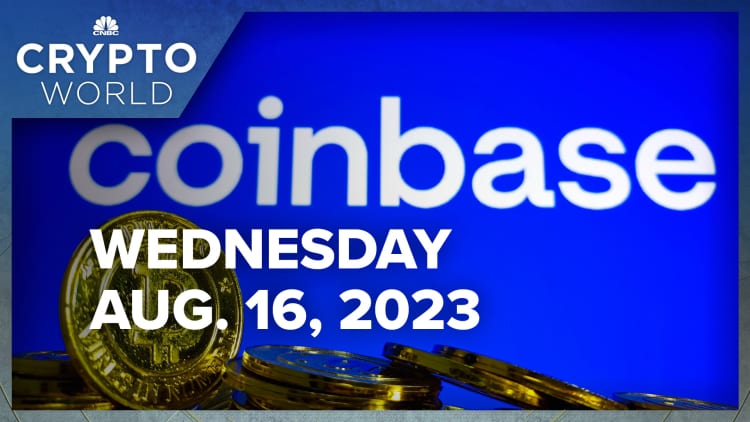Coinbase takes stake in stablecoin firm Circle, shuts down joint venture as it sees 'regulatory clarity'
Cryptocurrency exchange Coinbase is taking a stake in Circle, the issuer of the USDC stablecoin.

In this photo illustration, the Coinbase cryptocurrency exchange website is seen on the screen of a computer on October 05, 2018 in Paris, France.
Chesnot | Getty Images News | Getty Images
Cryptocurrency exchange Coinbase is taking a stake in Circle, the issuer of the USDC stablecoin, signifying a closer relationship between the two crypto heavyweights.
The two companies also said they will close down the Centre Consortium, a private governance organization for USDC, as they now see "regulatory clarity" on stablecoins.
"Reflecting Coinbase's belief in the fundamental importance of stablecoins to the broader crypto economy, Coinbase is taking an equity stake in Circle," Coinbase said in a blogpost Monday.
"This means that Coinbase and Circle will now have even greater strategic and economic alignment on the future of the financial system. Coinbase is committed to the long term success of the stablecoin ecosystem and USDC, specifically."
In March, USDC fell significantly below its peg after the collapse of Silicon Valley Bank, a major lender to the tech industry. Circle was a customer of SVB and held $3.3 billion of its cash reserves with the bank.
The coin subsequently regained its $1 peg after U.S. regulators closed SVB down, took control of its deposits and worked to restore customers' access to their money.
Circle launched its own U.S. dollar version of what's known as a "stablecoin" in 2018. The fintech company, which shelved plans to go public via a combination with a special purpose acquisition company in December, is a core player in the $124.1 billion stablecoin market.

USDC currently accounts for about 21% of the entire stablecoin market, with more than $26 billion worth of tokens in circulation. Tether is the largest stablecoin by far with a market value of $82.8 billion and an almost 67% share of the entire market.
Circle set up the Centre Consortium in 2018 to help guide policy thinking around stablecoins, a critical part of the crypto ecosystem that enable traders to buy in and out of the market without touching fiat currencies or the traditional banking system.
Stablecoins have come under greater scrutiny from regulators over the past year following the collapse of terraUSD, a major stablecoin which relies on a complex algorithm to hold its $1 value.
Officials have likened the assets to unregulated money market funds and have proposed bringing them under similar rules that govern banks and payment companies.
Circle said that, as well as bringing in Coinbase as an investor and shutting down the Centre Consortium, the company plans to launch USDC on six new blockchains between September and October. Blockchains are like the underlying, decentralized ledgers on which digital currencies are issued and traded.
Circle didn't name the blockchains it was looking to launch USDC on, but said the move would bring the total blockchains USDC is available on to 15 in total, as the firm looks to "continue accelerating USC's momentum with developers around the world."


 KickT
KickT 





















![Run An Ecommerce SEO Audit in 4 Stages [+ Free Workbook]](https://api.backlinko.com/app/uploads/2025/06/ecommerce-seo-audit-featured-image.png)









